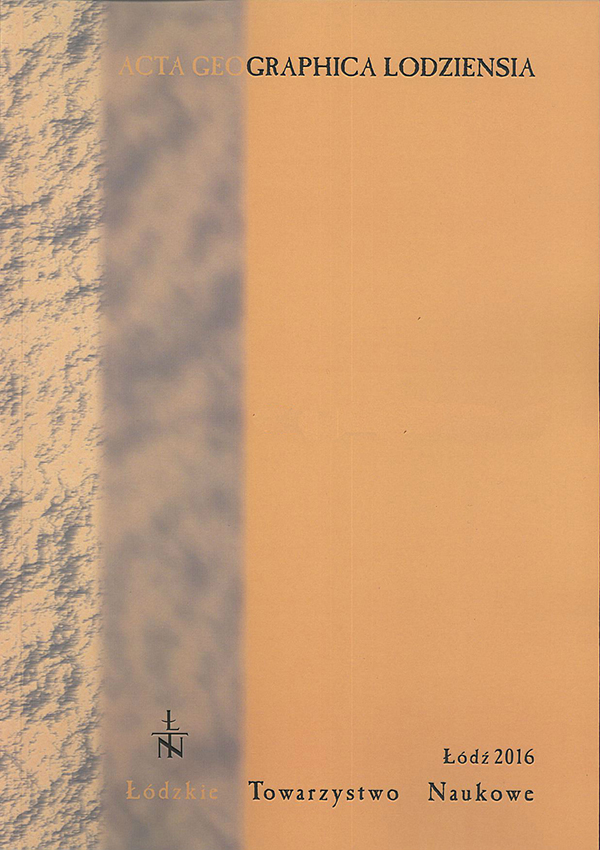Wstępna charakterystyka geologiczna i paleobotaniczna mokradła w Kopytkowie na tle analizy współczesnych warunków wodnych i szaty roślinnej (dolina Biebrzy, NE Polska)
Preliminary geological and palaeobotanical description of the Kopytkowo swamp in relation to the analysis of contemporary water conditions and vegetation (Biebrza River valley, NE Poland
Author(s): Daniel Okupny, Krzysztof Fortuniak, Marek Kloss, Maciej Ziułkiewicz, Jacek Forysiak, Anna Fortuniak, Leszek Bednorz, Włodzimierz PawlakSubject(s): Geography, Regional studies, Environmental Geography
Published by: Łódzkie Towarzystwo Naukowe
Keywords: swamping process; geological structure; stratigraphy of deposits; habitat conditions; Biebrza river valley
Summary/Abstract: The article presents the results of geological, hydrochemical, and palaeobotanical studies of the Kopytkowo swamp, located in the Middle Biebrza Basin. The Kopytówka flows through the studiedswamp – it is a left tributary of the Biebrza. The aim of the work was to characterise the features of thenatural environment in the vicinity of a measure point for streams of greenhouse gases in Kopytkowo.The location of the measure point was established on factual premises, that is: representativeness ofthe area of measurements, the requirements for the source area for turbulence sensors, as well as technicalconcerns. Constant evaluation of the streams of greenhouse gases (CO2, CH4, H2O) has been conducted at the Kopytkowo site since 2013. The aims achieved as part of the study include: a description of the morphological location and the rudimentary physicochemical properties of the biogenic formations in the area, a hydrological and hydrochemical survey, as well as a review of the vegetation cover. The basin of the studied swamp developed as a result of a cut-off from a river channeland a subsequent flooding of a part of the Biebrza basin. The deposit of biogenic sediments is composed primarily of limnetic and telematic silts, which suggests that sedimentation took place inhighly oxygenated conditions with the presence of inundation. The sedentation in the roof part of thedeposit progressed under the conditions of periodic floods of surface waters but also as a result of anintensive supply of ground water with the outflow point located in the slope of the valley. The main components of the studied sediments are terygenic silica, organic matter and biogenic silica. The identificationof these components has enabled a formulation of conclusions about the environmental transformations that occurred in the Kopytówka river valley. The hydrochemical studies were conducted at three locations along the transect between the research station and the rural buildings of Kopytkowo. The ground water was captured by piezometers at the depth of 0.3 m, and 1.3–1.5 m. Thewaters of the studied range show a strong genetic connection to ground water and a limited connection to rainwater; seasonal changes of the ion composition may be observed and traced back to increasedsupply from precipitation and thawing, including the river water of the Kopytówka. The plant communitiesthat dominate the vicinity of the Kopytkowo site include: high sedges and reed which representthe assemblages of Caricetum rostratae and Thelypteridi-Phragmitetum. Both the technical and environmental conditions confirm the validity of the choice of the Kopytkowo site for the study of the streams of greenhouse gases.
Journal: Acta Geographica Lodziensia
- Issue Year: 2016
- Issue No: 105
- Page Range: 149-162
- Page Count: 14
- Language: Polish

